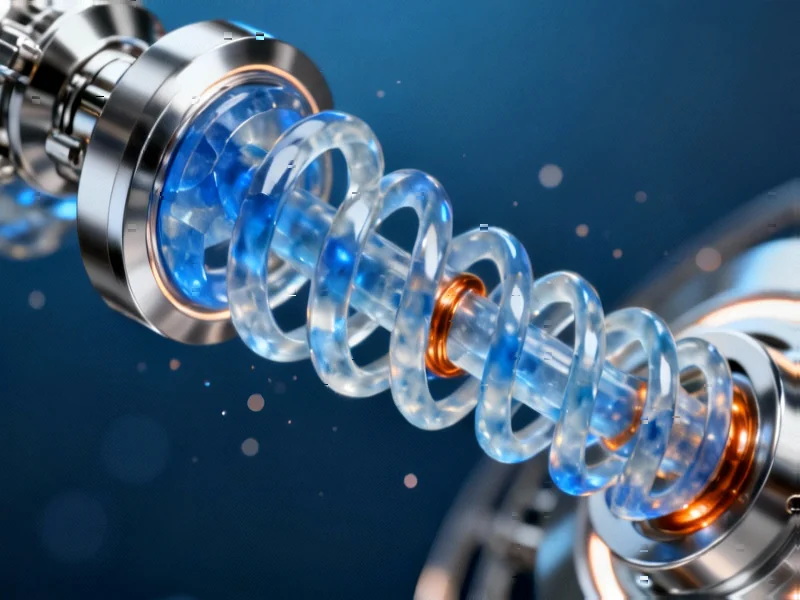Decoding the Archaeal Origins of Eukaryotic Complexity
Groundbreaking research published in Nature Ecology & Evolution has uncovered how serial innovations from Asgard archaea fundamentally shaped the DNA replication machinery of early eukaryotic ancestors. The study presents compelling evidence that the complex replication systems found in all modern eukaryotes, including humans, plants, and animals, originated through a sophisticated process of gene sharing and innovation among ancient archaeal lineages.
Table of Contents
- Decoding the Archaeal Origins of Eukaryotic Complexity
- The HDH Model: A New Framework for Understanding Eukaryotic Origins
- Massive Genomic Analysis Reveals Ancient Gene Transfers
- Reconstructing Ancient Evolutionary Relationships
- DNA Replication Machinery Shows Composite Origins
- Experimental Validation Confirms Functional Compatibility
- Implications for Understanding Cellular Evolution
The HDH Model: A New Framework for Understanding Eukaryotic Origins
The research builds upon the previously proposed Heimdall nucleation-decentralized innovation-hierarchical import (HDH) model, which suggested that eukaryotes originated from a small-genome archaeon that expanded its genetic capabilities through horizontal gene transfer (HGT). What makes this new finding particularly significant is that this framework, initially developed to explain non-conserved adaptive functions, now appears to apply even to highly conserved core machinery like the DNA replisome.
“This represents a paradigm shift in our understanding of eukaryotic evolution,” the study suggests. “The finding that even the most fundamental cellular machinery has composite origins challenges traditional views of linear evolutionary descent.”
Massive Genomic Analysis Reveals Ancient Gene Transfers
The research team conducted an exhaustive analysis of 429 published Asgard genomes from the National Center for Biotechnology Information, supplemented by seven additional genomes from previous metagenomic studies. To ensure comprehensive coverage, they incorporated all published circular genomes of Asgard archaea available through January 2025.
The methodological approach was particularly rigorous. Researchers employed multiple annotation tools including PROKKA v1.14.6 and CheckM v1.2.2 with custom HMM profiles specifically designed for Asgard archaea. For comparative analysis, the team gathered proteomic data from 3,236 other archaea and 62,291 bacteria from the Genome Taxonomy Database, alongside protein sequences from 993 eukaryotes from EukProt v3.
Reconstructing Ancient Evolutionary Relationships
Through sophisticated phylogenetic analysis of 75 conserved archaeal genes and 36 ribosomal proteins, the researchers reconstructed the evolutionary relationships within Asgard archaea. Their findings reveal two primary clades with Sifarchaeia positioned closer to either Lokiarchaeia-Thorarchaeia or Wukongarchaeia-Heimdallarchaeia clades depending on the gene set analyzed.
The study identified several key innovations:
- Custom HMM profiling enabled identification of distant homologues in newly discovered archaeal lineages
- Iterative refinement processes helped build accurate sequence profiles through multiple alignment cycles
- Structural validation using AlphaFold predictions confirmed the presence of critical protein domains
DNA Replication Machinery Shows Composite Origins
The research focused specifically on 35 gene families involved in DNA replication. Through meticulous analysis, the team demonstrated how different components of the eukaryotic replisome were acquired from various Asgard lineages at different evolutionary stages.
Six essential replisome components—PriL, PriS, PNCA, MCM, DP1, and RfcL—were selected for detailed examination. The concatenated phylogenetic analysis of these genes revealed a complex pattern of inheritance, with different elements originating from distinct archaeal sources.
“The eukaryotic replication machinery didn’t emerge fully formed from a single ancestor,” the research indicates. “Instead, it was assembled piece by piece through serial innovations across multiple Asgard lineages.”
Experimental Validation Confirms Functional Compatibility
The study went beyond computational analysis to include experimental validation. Researchers synthesized codon-optimized versions of archaeal replication genes and tested their functionality in yeast systems. Through yeast two-hybrid assays, they demonstrated that proteins from different Asgard lineages could interact effectively, supporting the feasibility of the HDH model.
Additionally, the team expressed and purified RFC protein complexes from Ca. Harpocratesius repetitus, confirming that these ancient components could form functional complexes similar to their modern eukaryotic counterparts.
Implications for Understanding Cellular Evolution
This research has profound implications for our understanding of how complex cellular systems evolve. The finding that core cellular machinery can have composite origins through serial innovation and gene transfer suggests that evolutionary processes are more dynamic and interconnected than previously recognized., as comprehensive coverage
The study concludes that expanding this framework to other core genetic and physiological functions could revolutionize phylogenomic inferences and contribute to a more comprehensive model for the emergence of genetic complexity in the last eukaryotic common ancestor (LECA).
As research continues, the team suggests that similar patterns may be discovered in other fundamental cellular systems, potentially rewriting our understanding of how biological complexity emerges through evolutionary innovation and collaboration across ancient microbial lineages.
Related Articles You May Find Interesting
- Advanced Computational Screening Reveals Potent Stigmasterol Analogs as Promisin
- Beyond the AI Hype: How Nubank’s Customer-First Strategy Built a $50B Fintech Em
- Britain Launches AI Sandbox Initiative to Fast-Track Innovation Across Key Secto
- Market Rally Erases October Losses as Analysts Point to Economic Resilience
- Russian Coldriver Hackers Launch Sophisticated ‘NoRobot’ Malware Campaign
References & Further Reading
This article draws from multiple authoritative sources. For more information, please consult:
- https://gtdb.ecogenomic.org/
- https://evocellbio.com/eukprot/
- http://hmmer.org/
- http://pfam.xfam.org/
- https://wilkox.org/gggenes
- https://meme-suite.org
- https://nrbsc.org/gfx/genedoc
- https://www.geneious.com
- https://www.mathworks.com
This article aggregates information from publicly available sources. All trademarks and copyrights belong to their respective owners.
Note: Featured image is for illustrative purposes only and does not represent any specific product, service, or entity mentioned in this article.



